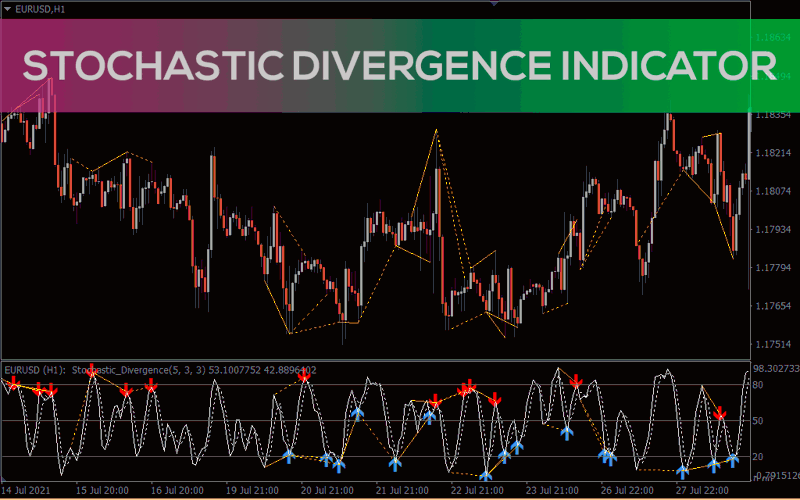💥Williams %R, also known as Williams Percent Range, is a technical indicator used in financial analysis to measure oversold or overbought conditions of an asset. It was developed by Larry Williams and is similar to Stochastic oscillator in its calculation and interpretation.
Williams %R is calculated using the following formula:%R = (Highest High - Close)/(Highest High - Lowest Low) x -100
💥Where Highest High is the highest price in a certain period, Lowest Low is the lowest price in the same period, and Close is the closing price.
💥Like the Stochastic oscillator, the Williams %R fluctuates between 0 and -100. When the indicator is above -20, the asset is considered overbought, and when it is below -80, it is considered oversold. Traders may use these signals as a potential time to sell or buy respectively.
💥One key difference between the Williams %R and the Stochastic oscillator is that Williams %R is a momentum oscillator that reflects the level of the close relative to the high-low range over a certain period, while Stochastic oscillator compares the closing price to the range of prices over a certain period of time. Additionally, the Williams %R is considered to be more volatile than the Stochastic oscillator, meaning it can provide signals for more frequent price reversals.

💥The Stochastic Indicator is a technical analysis tool used to measure the momentum of an asset's price relative to its price range over a given period of time. It compares the current price of an asset to its price range over a specified period of time and generates signals based on overbought and oversold conditions. The Stochastic Indicator consists of two lines: %K, which measures the current price in relation to the high and low range over a specified time period, and %D, which is a moving average of %K. It is similar to William's %R Indicator in that they both measure overbought and oversold conditions, but the Stochastic Indicator is based on the idea that closing prices tend to close near the high of the price range in an uptrend, and near the low of the price range in a downtrend, while Williams %R is based solely on the high-low range.
💥Williams %R and Stochastic Indicators are both momentum oscillators used to identify overbought and oversold conditions in the market.
💥The main difference between the two is in the way they are calculated. Williams %R uses the highest high and the lowest low of the last n periods, while Stochastic uses the current closing price in relation to the high-low range of the last n periods.
💥In terms of overbought and oversold signals, both indicators use the same threshold levels of 20 and 80. When the Williams %R or Stochastic value falls below 20, it is considered oversold, and when it rises above 80, it is considered overbought.
💥However, Williams %R tends to be more volatile than Stochastic, which can sometimes result in more false signals. It is also known for its ability to identify divergences between the indicator and the price action, which can be useful for predicting potential reversals in the market.
💥This indicator is named after its inventor, Mr. Larry Williams, and is based on the same concept as the Stochastic indicator. However, the graph is inverted, with the scale climbing from 0 down to 100 or a small value above it. Therefore, the overbought area is above the 20 line and the oversold area is below the 80 line. Instead of measuring the current price in relation to the high-low range of the last n periods like the Stochastic indicator, Williams %R measures the distance between the closing price and the high in N days, usually 10 days.
💥William's %R indicator is almost the same as the Stochastic indicator, so some people refer to William's %R as the 10-day Stochastic. However, William's %R uses the 80, 20 line instead of the 70, 30 line of the Stochastic indicator because it is more sensitive and prone to false signals. In fact, William himself suggested using a buy signal below 95% and a sell signal above 10% (keep in mind that the values run upside down from 0 to 100).
💥Unlike the Stochastic indicator, William's %R does not offer a moving average as a signal. Some analysts use a moving average, but because William's %R is a Stochastic, it runs very fast and can sometimes give an error signal. Therefore, some technical analysts use it only in combination with other technical tools.
💥Using William's %R for stock prices can be seen in the example image below. An arrow below or equal to 95 represents a buy or hold moment, while an arrow equal to 10 represents a sell or drain moment. However, it should be noted that William's %R adjustment sometimes does not correspond to the share price, as seen in the example around numbers 1, 2, and 3. William's %R can also show divergence with the price, which makes the signal more significant. You can learn more about William's %R indicator from
Terminal.